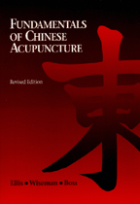Fundamentals of Chinese Acupuncture
Revised edition
- 1996, 532 pages
39,95 €
incl. VAT
plus shipping costs
Depending on the delivery address VAT may vary at checkout.
Delivery time: ca. 5 - 10 Tage/days
Description
This text presents a thorough view of classical acupuncture alongside the modern approach. It has several unique features that have contributed to its popularity. First, the authors have applied a precise method of translation that allows the clinical experience of both modern and classical Chinese authors to be transmitted directly. Second, the text provides the most consistent information at the lowest cost. Third, it provides a more systematic arrangement of study material. The authors have selected the best discussions available and arranged the text in four systematic sections: Materials and Methods, Channel, Pathways, Channels and Points, and Approaches to Point Selection. The Materials selections have been adapted to Western practice. However, the techniques presented are those used by Chinese clinicians and include some not usually taught to Western beginners. The methods of needle manipulation and stimulus management are explained in clear, step-by-step procedures. The information in the channels section describes all the channels, including the extraordinary channels, the main, internal, branch, divergent, connecting, sinew, and alternate pathways as they are currently understood in China.
The pathway-by-pathway descriptions are supported by sketches that follow the Chinese sources. Main pathologic signs, therapeutic capacities, symptoms, and TCM pattern relationships are detailed. Information provided for each point includes Chinese, Pinyin transliteration, English translation, Western alphanumeric designation, anatomical location guide, and classical location. A full set of point functions used in TCM to link diagnosis and treatment are detailed. Each function organizes the symptoms presented using TCM concepts. The classical signs and symptoms from which the modern indications and functions were derived, and primary and secondary indications and supplementary functions are also presented.
Author


